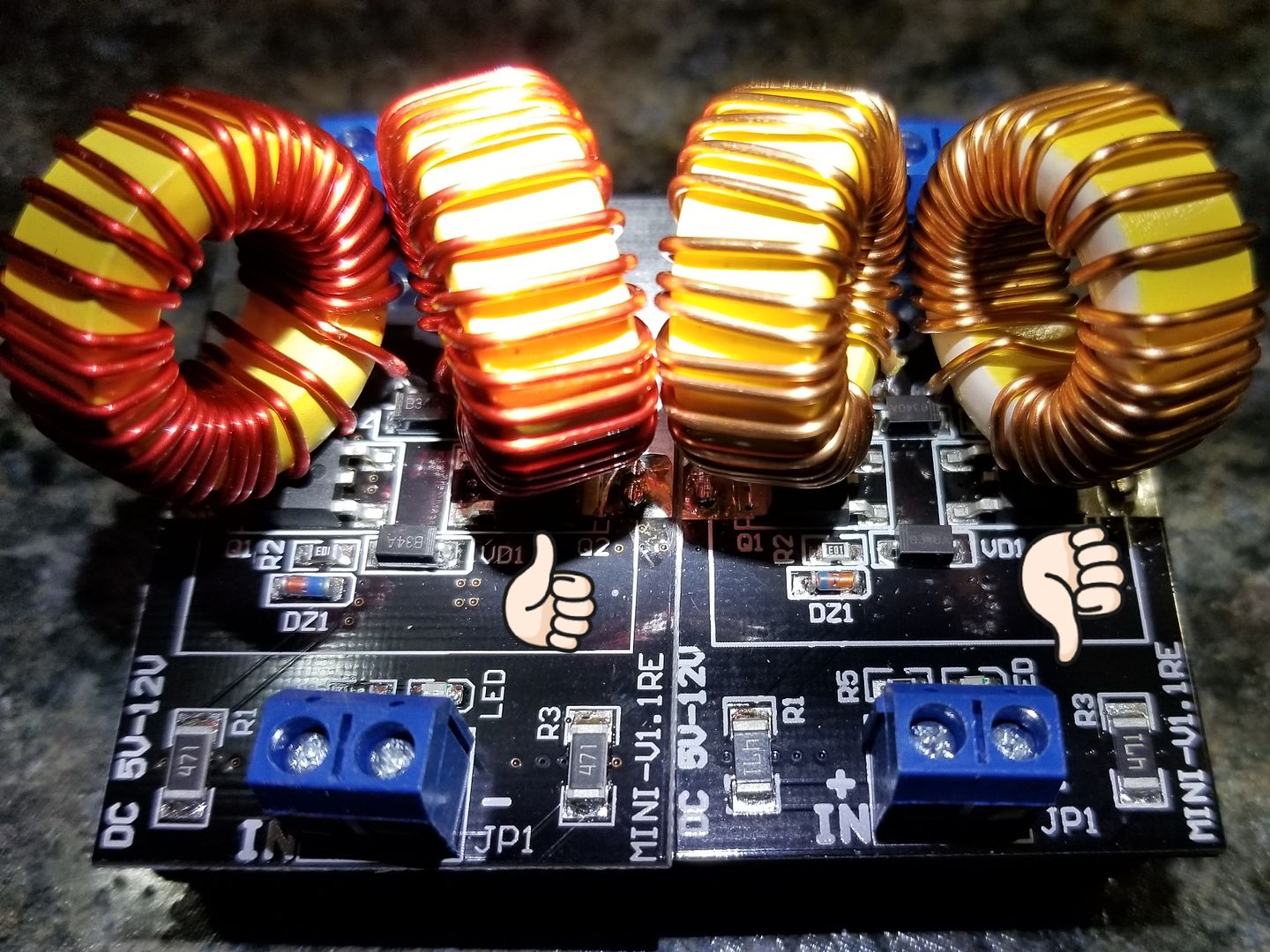I'm afraid it's hit and miss. And all suppliers seem to get the bad stuff. Like I have said before, get extra FETs at the same time. Best you can do is look for a supplier which shows units with "QC PASSED" stickers affixed to the drivers. At least this should cut down on reversed diodes but can't say about FET quality.
I think for anyone to attempt this, they should have some basic soldering skills.
-Diode polarity should be first thing to check as will just blow the FETs upon first time power is applied.
-Soldering of work coil is "highly" recommended as it input power. A loose work coil will blow the FETs instantly.
Here's a post I did when I received a 100% bad batch.
@rz was working on a 2 cell driver and found he had to add a voltage booster circuit to supply the gate voltage to get it to oscillate reliably.

I think for anyone to attempt this, they should have some basic soldering skills.
-Diode polarity should be first thing to check as will just blow the FETs upon first time power is applied.
-Soldering of work coil is "highly" recommended as it input power. A loose work coil will blow the FETs instantly.
Here's a post I did when I received a 100% bad batch.
Don't even pre-test anymore, just change the drivers out. Drivers going bad in the field has dropped to just a couple percent now since I started to change them out late last year. Was closer to 15-20% at one point before that.Hey guys. Today was not a good day. A definite downside to the China business risk taking end of things. Also. a prime example of why I need to move away from those pre-made heater drivers.
So today I started to make up some IHs using drivers from a new batch I got lately. Actually, two orders of 50 each but today was to first time I started to use any. First unit just starts smoking right away. Figured it was just a bad driver as has happened before. Second unit, dame thing. Third... dido. After much head scratching and a little swearing, I found the problem.
They all have their diodes installed backwards. 100% of 100 units, assembled wrong from factory.All 4 diodes installed reversed. Supplier wants me to return with tracking at my expense. Or he will refund me a whole $50 for the lot. So guys, beware some sellers for these. If just buying singles, pick a seller that has a QC sticker on the boards. If you do get one with backwards diodes, the FETs will blow the first time you attempt to use it.

The unit on the left is a good unit and the one on the right is a bad unit. DZ1 and VD1 are backward.
Reworking is not a simple task. Need to unsolder one side of caps to get at the coil legs to unsolder as well. Then you have access to the two diodes hidden under the coils.
The DZ1&2 can just be removed and discarded, but the VD1&2 need to be removed, flipped and re-soldered.
Then clean up and resolder the coils and caps back in place.

So what does this mean? Not much for most folks, as it is my problem but will slow things down some. But I'll muddle through it. Just needed to rant some...

You are pushing the spec here. The closer you get to the lower side, the higher the risk of getting lock ups and no oscillation. Which results in.... yepper, blown FETs. Likely work OK while battery is full but once it starts to drop off, the risk increases. Don't forget that there will be voltage loses in the wiring, switching, etc. which will lower the source voltage some. I'd advise to stay at a safer operating voltage range.I wonder if someone has try to run the zvs with a 7,4 lipo battery...The zvs is rated at 5V-12V so...it should work some way...and would a 7,4 lipo with a high amps like 2200 mah and high discharge something like 40C work like a 11,1V and 800 mah 20C lipo?
Thanks for reading
@rz was working on a 2 cell driver and found he had to add a voltage booster circuit to supply the gate voltage to get it to oscillate reliably.

Last edited by a moderator:

















